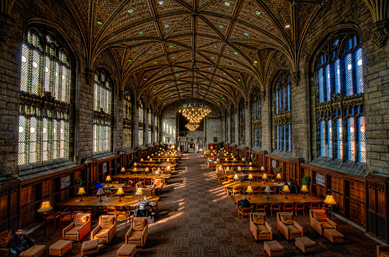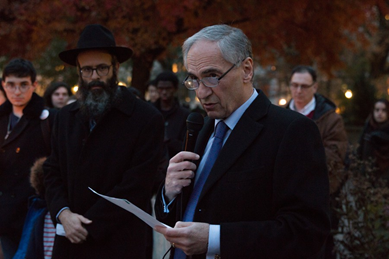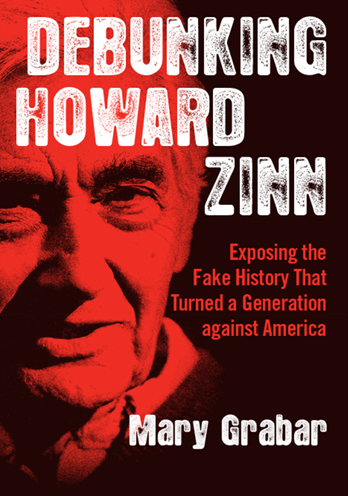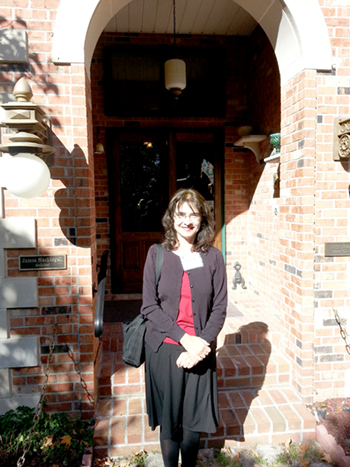 By Matthew Andersson, M.B.A. 1996, The Booth School of Business, University of Chicago (posted by Mary Grabar, November 23, 2020);
By Matthew Andersson, M.B.A. 1996, The Booth School of Business, University of Chicago (posted by Mary Grabar, November 23, 2020);
As at other universities, in the search for a new president of the University of Chicago, we should be aware of security concerns regarding alliances with foreign powers, especially China.
The higher education sector is perennially in the news for a number of reasons: they include the exploding student debt challenge; sky-high tuition costs; politically correct curricula and speech accommodation; ideological bias and propagation; and the current impacts on campus operations due to the covid phenomenon, which is having a devastating impact on university finances, and faculty and student morale. The higher education sector is crying out for leadership. It tends to change hands very slowly, and like modern public corporations, it generally resists change. One university is a current case example, and may be instructive for the larger university and college industry.
One of America’s most storied institutes of higher education, the University of Chicago, has established a formal search for a new president. As university presidents report to their Boards (like commercial corporations), the governance bodies are charged with filling this administrative role, and to a unusual degree are highly dependent on it, as most university boards (or regents, fellows and other structures) consist of volunteer executives who look on a university or college board seat as a kind of philanthropy, and rarely have any formal experience in any educational institutions.
While this relationship is also true at Chicago, and with its current long-time president Robert Zimmer, who reports to his Board of Trustees, more central to university governance and administrative continuity is who the Trustees report to, formally and informally, and what mix of external influences and interests impinge on university governance.
This is an interesting question. Trustees, Regents, Fellows and other corporate governing bodies (Brown University is just “The Corporation”) are from a wide mix of affiliations. Most are there because they have access to the one resource universities can never seem to get enough of: money. So it has become especially prevalent to see most trustees associated with banks, private equity, family foundations, large public corporations, and government. Few typically have any higher education background.
In Chicago’s case it also has two unusual administrative relationships that impact its strategy and policy: FermiLab and Argonne National Labs, both of which are federal institutions oriented in the U.S. military complex through the Department of Energy and Department of Defense. It is similar to the nation’s other R1 research universities that provide funded scientific research --social, physical, and biological science, along with engineering--that is commercialized or nationalized. The covid phenomenon is also bringing with it the gradual articulation of a global economic “re-set” ideology, which has a particularly strong fit with R1 university research capabilities and interests: as World Economic Forum founder Klaus Schwab recently asserted in a presentation to the Chicago Council on Global Affairs, this economic agenda seeks to create a coordinated effort, “leading to a fusion of our physical, digital and biological identity.” This ambitious, if fascinating vision draws directly on the core capabilities of university institutional research in engineering and robotics; computing; psychology and philosophy of mind; social theory and of course economics, among other disciplines. Such an experimental program of “identity fusion” is of intense interest to both commercial and government entities. For example, the US Department of Defense, including the Defense Advanced Research Agency (or DARPA) is working on intelligent robotics in aviation (“smart” drones) and even hybrid fighting ‘soldiers” that can deploy digital holograms or be operated remotely. These programs draw on university research in several areas and are generously funded, and are part of the mix of university administrative accommodations, similar to the effective US military “invasion” onto university campuses in the 1940s, over the Manhattan Project in the development of nuclear fission and weaponry. UChicago’s famous “CP-1” experiment led to the first man-made, self-sustaining nuclear chain reaction in December, 1941 (in the current university-industrial-military nexus of modern research cooperation,
 Chicago’s president Zimmer has led the university into controversial international cooperation with Israel’s Ben Gurion University, and signed an exclusive joint venture agreement with former Israel president Shimon Peres and City of Chicago former mayor Rahm Emanuel, in a ceremony in Jerusalem concerning joint molecular engineering and nanotechnology research. Zimmer has been criticized for a lack of attention to certain Chicago priorities including graduate teaching difficulties, and a lack of initiative in renovating and re-designing decades-old academic programs, all while its college tuition has become the highest in the nation, and University expenses, including administrative expenses soaring).
Chicago’s president Zimmer has led the university into controversial international cooperation with Israel’s Ben Gurion University, and signed an exclusive joint venture agreement with former Israel president Shimon Peres and City of Chicago former mayor Rahm Emanuel, in a ceremony in Jerusalem concerning joint molecular engineering and nanotechnology research. Zimmer has been criticized for a lack of attention to certain Chicago priorities including graduate teaching difficulties, and a lack of initiative in renovating and re-designing decades-old academic programs, all while its college tuition has become the highest in the nation, and University expenses, including administrative expenses soaring).
The University also has a very large debt component to its capital structure (nearly $5 Billion in current outstanding debt obligations). This adds another layer of complexity to the ownership structure of a university and the roles and responsibilities of a president (moreover, the current economic environment has been cited by the Crain’s Chicago Business recently, as a particular disadvantage compared to its neighbor, Northwestern University, in Evanston, Illinois).
Last, interestingly, comes the student: While at Chicago much effort has been organized around building the College, the faculty is its priority (including their cost). The top “1%” of professors are the “rainmakers” for federal grants, corporate donations and research projects, or in the case of Booth, for a tightly linked “conveyor belt” into banking, consulting, private equity and manufacturing that supports its global operations and along with Economics, encourages significant alumnae investment. In Booth’s case this also allows for it to serve a critical university revenue function, consistent with the nation’s other top business schools (UChicago Law and Medicine also do their part, but for Law, its contribution is generally recognized more as political currency in the judiciary, and influence in government agencies. Law schools generally are undergoing significant reassessments of their financial strategy. There are also distinct factors weighing on graduate school programs, including reduced admissions levels deemed necessary to adjust to university financial constraints, and to new dislocations in labor markets for Ph.D graduates, according to the Harvard Crimson and The Chronicle of Higher Education).
It is true that all universities, large and small, have become dependent on tuition; however, the aggregate student debt market (almost $2 Trillion) is stressed, and will become impaired or possibly even frozen due to the current political special interests that preoccupy the country, and their effect on the economy (especially the Covid phenomenon; a possible global war; and systematic financial disruption). This makes university endowments especially critical, and it is in this domain that Mr. Zimmer has been wanting. Chicago has seen a relatively modest change in its endowment size over his tenure, and compared to the University of Texas System and Harvard—the nation’s two richest universities—is at a competitive disadvantage, and sitting in a second-tier status. Moreover, universities may have to face a zero-tuition model from a combination of reduced federal subsidies, changes in household income, and political pressure. Some private universities may also merge with larger state universities in order to share costs, resources, and a finite number of students.
It is the finance role (including cost cutting of excessive administrative overhead) that will likely preoccupy the capabilities of Chicago’s next president to an unusual degree, and reflect the Trustee’s fiduciary concerns and liability, both for the complex mix of the University’s financial obligations; to make up for the fundraising shortcomings of the Zimmer administration, and to respond to new demands in digital applications, including at the professional schools (the Trustees themselves will experience some turnover, including the Trustee chairman who is well into retirement). The current political environment that is pitting two different putative views of the world--one more socially progressive, activist and state-centered; the other more socially conservative, constitutionalist and market-centered--may have some impact on president selection, although historically Chicago has been “center-right” and globalist in governance culture, and still appeals ultimately to a core corporate-government constituency that operates outside fluctuations in popular politics.
Many different political factions and interests otherwise make strong claims on universities (many legal, such as civil rights assertions, or complicated federal education policy) as a proxy for society generally. This presents a decisive fork in the road for Trustees: They will either reinforce the core independent teaching and research purpose of higher education, or become further captured by special interests. As former UChicago professor Saul Bellow cautioned, universities, and students, may be better served by keeping some distance from larger social and political contentions, in order to concentrate on the learning tasks that necessarily require some degree of temporary isolation. A good university president understands that trade-off, while adapting to, or rejecting, otherwise unavoidable externalities.
One thing is certain: No matter who fills the president role at any university, the instinct for institutional continuity is always a priority (doing the same things, in the same way). This can cut both ways: There is much heritage and tradition in a university that justifies some protection, but at some point, protection becomes entrenchment, and reform efforts, blocked. Reforms that are on student’s (and parent’s) minds today include sky-high tuition and living costs, complicated curriculum design, and perhaps especially, degree cycles; that is, the time it takes to get in, and get out of, a university degree program (see my article in the Financial Times on this topic related to UChicago). In the UK, it is three years for an undergraduate program; in several MBA degree tracks, it is one year, while law school is a 3-year undergraduate degree at Cambridge or Oxford, while MD degrees at some leading US schools such as NYU, have compressed their program to 3 years. This has a significant bearing on student and family costs, and why the next University president will have to assert a more aggressive strategic vision than that administered carefully by Mr. Zimmer. Some of this comes down to selecting a “safe” insider, versus a more disruptive leader. Given the nature of the challenges being forced on higher education, safe may no longer even be an option.





